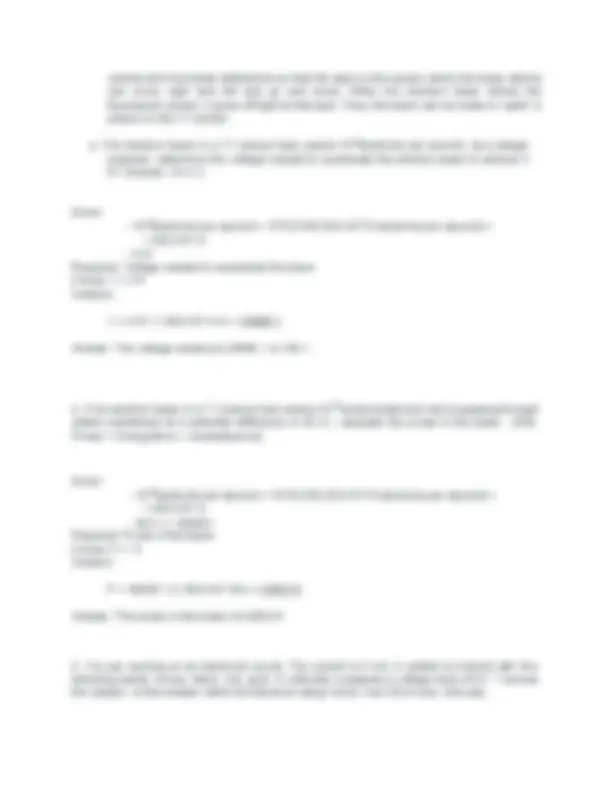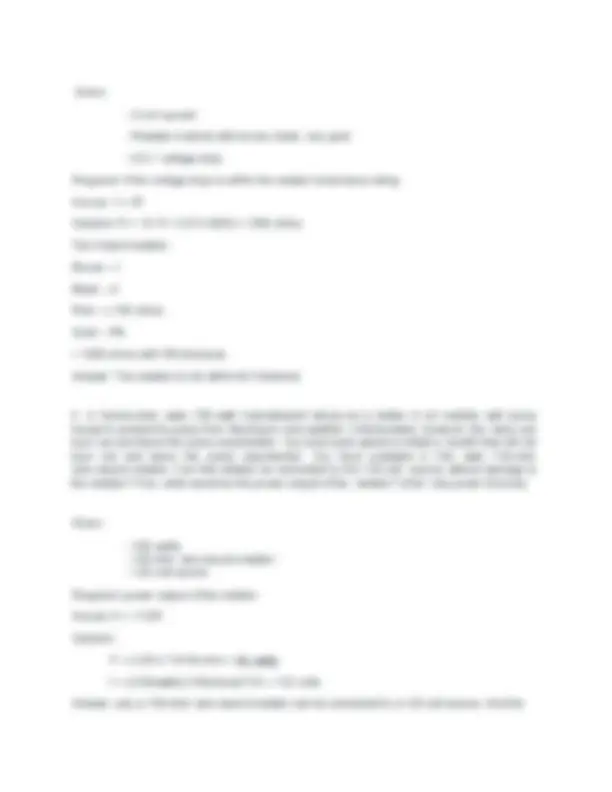ALARDE, ANGELA LORRAINE C. OCTOBER 10, 2020
BS ECE- ECE21S1 PROF. ERIC YBANEZ
Assignment
1. Suppose that your car will not start. To determine whether the battery is faulty, you turn
on the light switch and find the lights are dim, indicating a weak battery. You borrow a
friend’s car and a set of jumper cables. However, how do you connect his car’s battery to
yours? What do you want his battery to do?
- To connect his car’s battery to mine we will use jumper cables the red clamp will
be attached to the positive side of each battery and the other clamp or the black
clamp to the negative side of the battery, then the car with the live battery will start
the car to transfer some of the charge to the other battery. We need the dead
battery to start up using some of the charge of a live battery to be able to start up
the car engine for the car to move to a nearest shop to fix the battery.
2. A Universal Serial Bus (USB) port is a common feature on both desktop and notebook
computers as well as many handheld devices such as MP3 players, digital cameras, and
cell phones. The USB 2.0 specification permits data transfer between a computer and a
peripheral device at rates up to 480 megabits per second. One important feature of USB
is the ability to swap peripherals without having to power down a computer. USB ports
are also capable of supplying power to external peripherals. A USB cable is a four
conductor cable with two signal conductors and two conductors for providing power. The
amount of current that can be provided over a USB port is defined in the USB
specification in terms of unit loads, where one-unit load is specified to be 100 mA. All
USB ports default to low-power ports at one-unit load, but can be changed under
soft-ware control to high-power ports capable of supplying up to five unit loads or 500
mA.
a. A 680 mAh lithium-ion battery is standard in a Motorola RZZR®. If this battery is
completely discharged (i.e., 0 mAh), how long will it take to recharge the battery to its full
capacity of 680 mAh from a low-power USB port? How much charge is stored in the
battery at the end of the charging process?
Given:
- 680 mAh
- 100 mA
Required: Time for the battery to charge to its full capacity, and how much charge is stored in
the battery at the end of the charging process?














